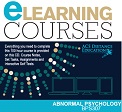 Distance Education as an industry has seen extensive growth in recent years.
Distance Education as an industry has seen extensive growth in recent years.
This course is developed by a consortium of academics and business people with decades of experience developing and delivering distance education courses.
- Enrol any time, work at your own pace, study from anywhere in the world.
Why Is Distance Learning so Successful Today?
Here are some of the reasons why distance education is becoming increasingly popular:
1. More Tools for Distance Education - Many new tools have become available for Distance Educators to use (eg. Internet, Fax, email, telephone, more extensive courier services, better air services, etc)
2. Classroom Education more Costly - The cost of classroom education, particularly in developed countries, has become increasingly prohibitive, often resulting in a depreciation of standards and services.
3. Greater Social Acceptance of new Technologies - New technological tools have become increasingly widely available around the world.
4. Globalisation Opened up Markets - Courses can be offered to a wider demographic of people living in many different countries.
5. Busier Lifestyles - There is an ever increasing need for greater flexibility in education –which did not exist in the past. People’s lives and their life choices are constantly changing and this is being reflected in the variety and scope of educational courses being offered.
6. Self Directed Education is more effective - Research is actually showing that student centred education and self directed education is more effective and graduates have better career prospects.
This course will introduce you to the tips and tools of delivering distance education from experts in the industry - ACS has been successfully delivering distance education programmes for over 30 years!
Lesson Structure

There are 9 lessons in this course:
- Scope and Nature of Distance Education
- Trends in Education
- Changes in the World and their Impact on Distance Education
- Growth in Distance Education Industry
- Advantages and Disadvantages of Distance Education
- Forms of Distance Education
- Traditional Distance Education (paper-based education)
- Mentor guided projects or research
- Video or audio courses
- Real Time Conferencing
- Online
- E Learning
- Blended learning
- What Style of Study Works Best
- Adapting Teacher-Learning Models to Distance Education
- Exposition Model
- Behavioural Model
- Cognitive Development Model
- Interaction Model
- Transaction Model
- Comparing Online Education with Traditional Distance Education
- Getting the Student Started
- Profiling Students who are New to Distance Education
- Making the Transition
- Getting Past the First Lesson
- How to Do Assignments
- Time Management
- Writing Style
- Completing Assignments
- Supporting Students
- Introduction to Nature and Benefits of Support Services in Distance Education
- Types of Support Services
- Guidelines for Counselling New or Prospective Students
- Guidelines for Completing Assignments
- Help with Research
- Student Feedback
- Real Time Support
- Introduction
- Dealing with Practical Work
- Telephone Conference
- Online Chat
- Video Conferencing
- Mentoring
- Workshops and Attended Events
- Conducting Structured Exercises in Small Groups
- Listening Skills
- Empathic Listening
- Conflict
- Managing Resources
- Scope of Resources
- Cost of Resourcing
- Considering Resourcing Options
- PBL Project to manage resources for a specified distance education course.
- Assessment
- Introduction
- Various Approaches to Assessment
- Grading
- Types of Assessment for Distance Education
- Submitting and Processing Assignments
- Marking Exams
- Exam Procedures and Processes
- Plagiarism
- Practical Examination
- Student Administration
- Introduction
- Advice for Prospective Students
- Enrolment Procedures
- Student Records
- Managing Feedback and Course Improvement
- Communication Skills
- Introduction
- Interpersonal Communication Skills for Distance Education
- Classroom Education does not Suit Everyone
- Understanding What Impairs a Student's Focus
- Supporting Graduates
- Cost Vs. Benefit
- Alumni
- Direct Support
- Assistance with C.V.'s
- Networking Services
- Career Advice
- Ongoing Use of Student Services
- News Bulletins
Each lesson culminates in an assignment which is submitted to the school, marked by the school's tutors and returned to you with any relevant suggestions, comments, and if necessary, extra reading.
Aims
- Identify differences between various modes of distance education and other forms of education.
- Determine appropriate methods for communicating with, and motivating action from, new distance education students.
- Provide effective support services to students undertaking distance education studies.
- Explain the ways that teachers and students can work together by using effective listening skills, problem solving techniques, empathy and other interactive strategies to maintain effective and meaningful relationships in the learning process.
- Manage physical and human resources within a distance education program to achieve appropriate benefit for cost expended.
- Conduct effective assessment of distance education students.
- Conduct effective administration of distance education students.
- Improve students’ and teachers’ ability to communicate effectively in a distance education environment.
- Provide support for graduates upon or following completion of a distance education course.
What You Will Do
- Investigate the scope and nature of distance education being used in your country, both by: a/ Government Education Services and b/ Private enterprise
- Describe which method of distance education you think is most appropriate for specified skills
- Interview students from the same course or a course in the same field to find what motivates them to complete the course.
- Give an example of a positive and a negative incentive in an educational setting.
- Give an example of where a negative incentive may be appropriate and explain why.
- List three (3) practical ways a teacher might develop inquisitiveness or curiosity amongst students
- Explain how your approach might be different when trying to motivate a perfectionist or high achiever compared to motivating a person with low self esteem or lack of enthusiasm
- Investigate 2 other distance educations schools and compare support services in each.
- Explain how you could increase the capacity of the learning experience to cater to varied individual needs amongst D.E. students studying on line courses
- Observe and record listening behaviour
- Describe what applications you think chat has for distance education
- Outline training needed before using a new tutor (with only classroom teaching experience) as a distance education tutor, who needs to communicate with D.E. students using a variety of different communication methods

WORKING AS AN EDUCATOR
Education is the process of giving and acquiring knowledge. This may be in a more traditional teaching role, or it may be that you have a desire to pass on the skills that you have developed on to others. There are many different ways to work in education, and in today's world education is changing. In the past there were generally strict pathways for education – school, university, and apprentice type training. These days, through the schooling system there are several ways to receive education – for example attend school; do home schooling; do correspondence school via internet, hard copy or the radio; attend school part-time whilst completing a traineeship. Once you leave school the options are endless. You can learn skills on the job, go to trade schools, university, community colleges, vocational training, apprenticeships, distance education (vocation and university) and more.
You can see from these examples that one of the main differences is the delivery modes that are available these days, most notably the difference that the internet has made to the way education can be delivered.
Opportunities
No one can predict with certainty what might happen over coming decades; but there are trends which have started to emerge:
- The traditional model for universities and vocational colleges has been losing relevance over recent decades. A recent media report stated "We have too many under educated students and too many second rate universities" Traditional institutions in developed countries have been churning out graduates for years who either become unemployed; or cannot get jobs in areas related to what they studied.
- Alternative education is expanding while traditional education is under increasing pressure.
- Research has shown teachers in traditional schools (primary, secondary and tertiary) are increasingly stressed.
- Research is showing that employers are placing less emphasis on qualifications, ....however, learning. knowledge and skills are still highly valued by employers
- New opportunities continue to emerge in alternative forms of delivery. Online education is a boom industry. Production of multimedia and educational video is booming....but teachers in the classroom are stressed.
The way the education industry is heading provides any skilled person, in any industry to become an educator. We now have the opportunity of delivering education to anyone, anywhere in the world.
Risks and challenges
Starting your own school or training course can be hard work, and difficult to get off the ground. You may need assistance with admin, business, and marketing support.
Colleges and universities that depend heavily on export earning (ie. international students) or government funding are at risk of staff cutbacks when cash flow fluctuates.
An increasing number of teachers are "casual" employees who spread their income across several colleges; or between teaching and non education industry jobs. This approach to being a teacher may offer less risk.
How to become an Educator
There are many different routes to become an educator. Traditional teachers often need a University degree in education; but this will depend on the level and subject area you teach. Some people move into teaching by starting as a teachers aid, with few if any qualifications at all. You may come to teaching through specializing in another industry and becoming an educator either within your workplace, within a training organisation, or within your own training business.
No matter what kind of educator you intend to become, you will need to start with your own education (whether that is through formal, or hands on training) in an industry, followed by training in education. You can learn education delivery skills through experience, university or vocational courses, such as this one.